Why Are Home Router Addresses 192.168.1.1 Instead of Other More Memorable Numbers?

The other day, Lawtee saw someone complaining in a WeChat group: “Why is the router address 192.168.1.1, such a string of numbers that’s hard to remember? Can’t it be something simpler, like 1.2.3.4?” At first glance, this question seemed quite interesting. Lawtee has used many routers but never thought about where the number 192.168.1.1 came from. So, he looked up some information online and even asked an AI. However, after comparing multiple sources, he found that the explanations on the Chinese internet about this issue seemed lacking and not very accurate. Here, Lawtee summarizes his findings, striving to uncover the historical truth.
Common Online Interpretations of Router Addresses
After searching online, Lawtee found various explanations on the Chinese internet about why routers use 192.168.1.1, with AI responses often being ambiguous. Here are a few common claims:
Programmers Chose It Randomly
Many forums and articles suggest that 192.168.1.1 was arbitrarily decided by programmers who found the number “pleasing” or “simple.” Some even joked that the binary of 192.168 (10101000) looks “patterned,” so it was chosen. Lawtee felt this explanation sounded too casual and doubted it was that simple.The Path Emerged from Frequent Use
Lawtee discovered a popular discussion on the tech forum HN, where Stéphane Bortzmeyer, a technical expert involved in drafting several internet DNS standards, shared an old email from 2009. The email mentioned that a company used 192.168.x.x as example addresses in early documentation, and others followed suit. As more people used it, this practice was later adopted in technical standards. It felt like “a path is made by walking.” Due to the authority of this response, it has been widely cited in subsequent articles.
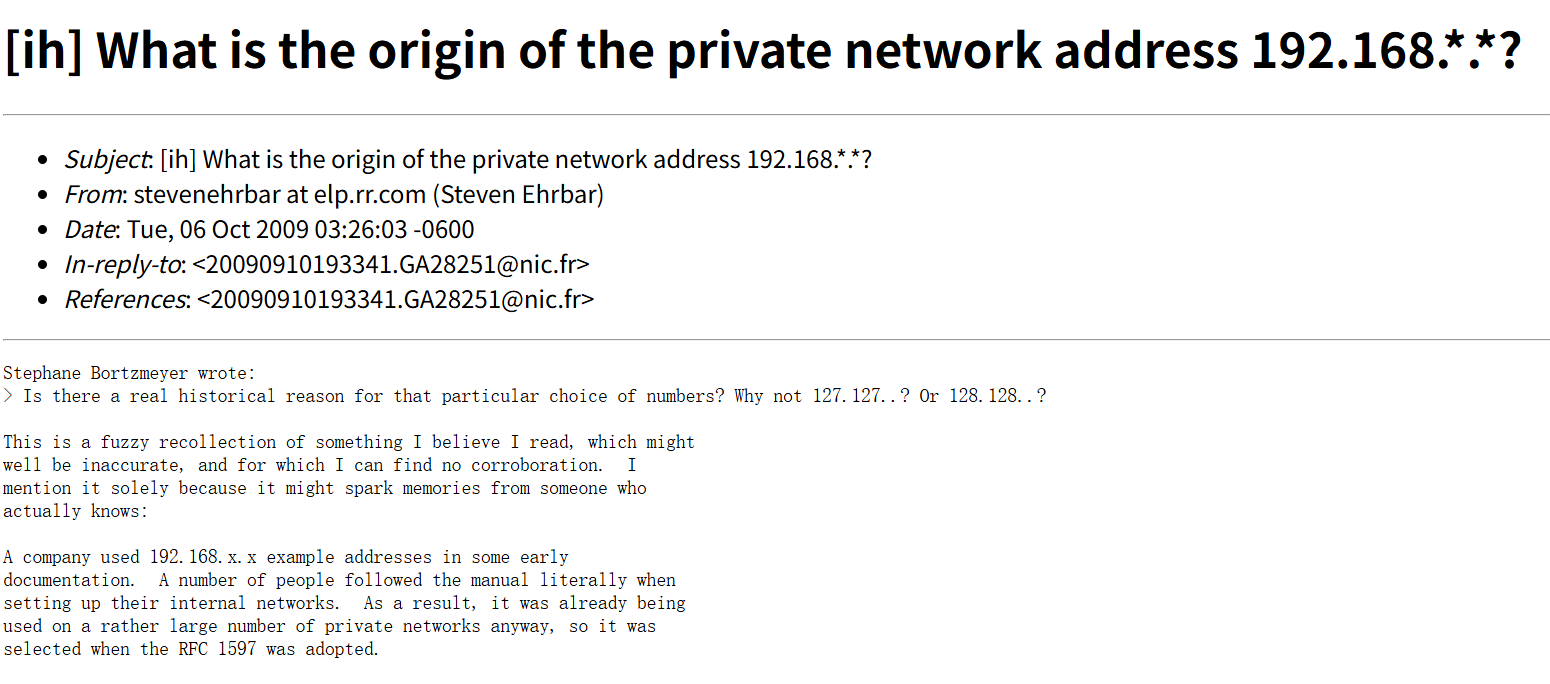
Protocol Mandates This Address
Another claim is that 192.168.1.1 is a “protocol-enforced” private address, and routers must use this range. AI responses often mention the RFC 1918 technical standard, which defines three private address ranges (10.x, 172.16-31, 192.168), but they don’t explain why 192.168 was chosen. Some even say, “1.1.1.1 is a public address and can’t be used,” but Lawtee felt this only answered “why not use 1.2.3.4” without clarifying the origin of 192.168.A Historical Legacy
A few tech blogs mention that 192.168 was “leftover” from internet address allocations in the 1990s, so it was used for private addresses. However, they were vague about how it was “leftover.” AI responses often mention IANA (Internet Assigned Numbers Authority) but are generally superficial and lack details.
After reviewing these explanations, Lawtee found them insufficient. Many online interpretations were either too vague or somewhat speculative. So, Lawtee used search engines to look for English materials from the 1990s and checked some IANA historical records to clarify the matter.
Basic Concepts of IP Addresses and Private Addresses
Simply put, an IP address is like a “house number” assigned to network devices so they can find each other online. The home router’s 192.168.1.1 is the gateway address for the local area network (LAN), through which phones and computers connect to the external internet.
Lawtee looked up the widely discussed RFC 1918 technical standard, “Address Allocation for Private Internets,” and found that early internet IP addresses were concerned about scarcity. In 1996, three “private address” ranges were designated for internal use to avoid conflicts with public networks:
- The first, 10.0.0.0 to 10.255.255.255, is for very large internal networks, with about 16 million addresses.
- The second, 172.16.0.0 to 172.31.255.255, is for medium-sized internal networks, with about 1 million addresses.
- The third, 192.168.0.0 to 192.168.255.255, is for small internal networks, with about 65,000 addresses.
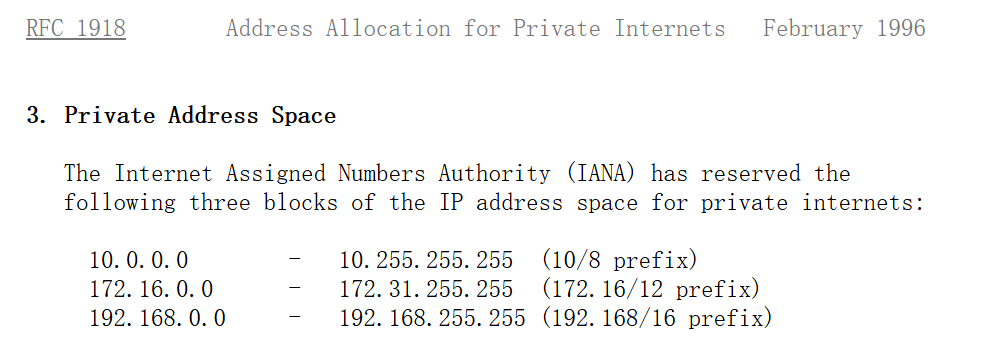
Home routers mostly use the 192.168 range because it has enough addresses for household use and doesn’t conflict with large corporate internal networks (10.x.x.x).
Why Specifically 192.168?
Lawtee dug into some historical materials and found discussions about RFC 1918 on the American Q&A site. It turns out that the number 192.168 wasn’t chosen arbitrarily but was a “casual” selection by IANA during address allocations in the 1990s:
- At that time, IP addresses were allocated by “class” (Class A, B, C), and 192 belonged to Class C, suitable for small networks.
- In 1990, when IANA allocated IP addresses, 192.0 to 192.167 were already taken by other organizations, and 192.168 was the next available address in the database. So, Jon Postel (an IANA authority) decided to use it—no special reason, just “the next one available.”
- Daniel Karrenberg, one of the authors of RFC 1918, also stated: “No deep meaning, it was just sequential, and changing it would be troublesome.”
As for why it’s 192.168.1.1 or 0.1, manufacturers found the first address in the subnet (.1) most intuitive for the gateway, making configuration simple. After early router manufacturers like Linksys and Netgear used 192.168.1.1, others followed, and it gradually became an industry standard.
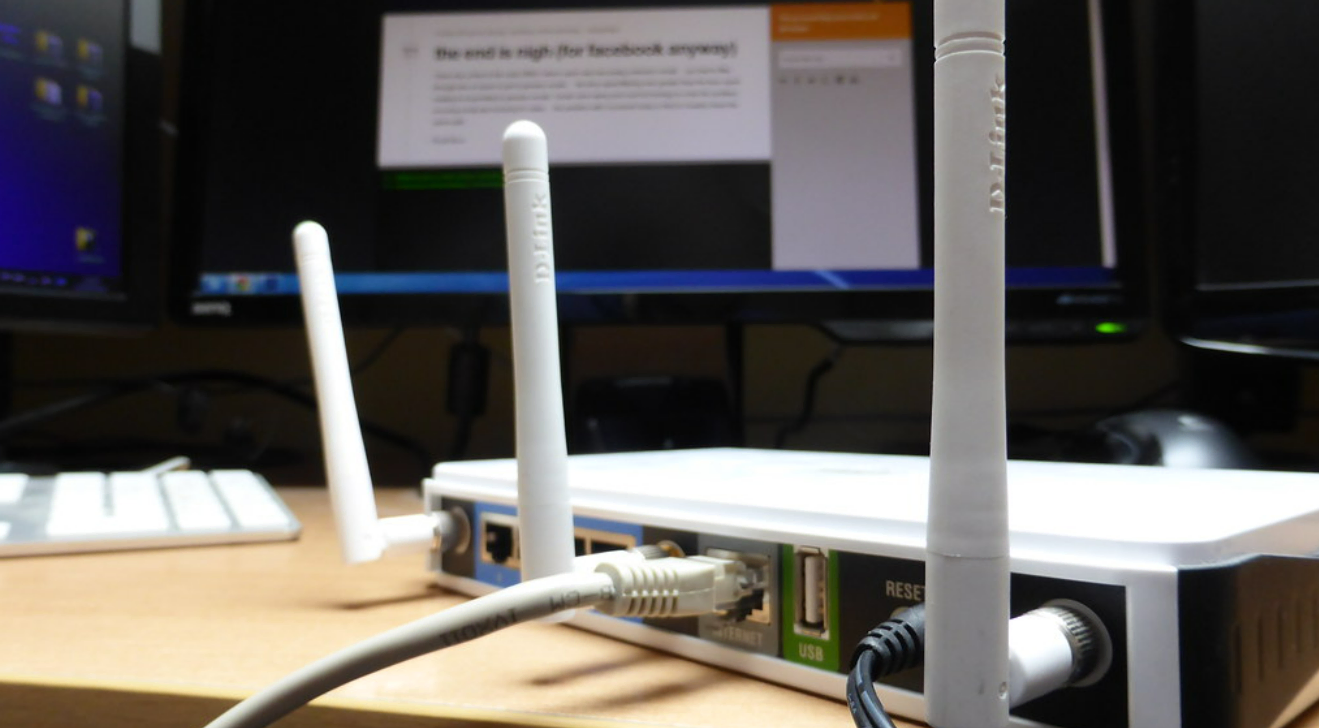
Why Not Use More Memorable Numbers?
Lawtee also thought 1.1.1.1 would be easier to remember but knew such addresses were already in use. After all, memorable DNS server addresses like 1.1.1.1, 8.8.8.8, 9.9.9.9, 101.101.101.101, and 114.114.114.114 are etched into Old T’s DNA, and these easy-to-remember addresses are all owned by major internet companies or monopolistic organizations.
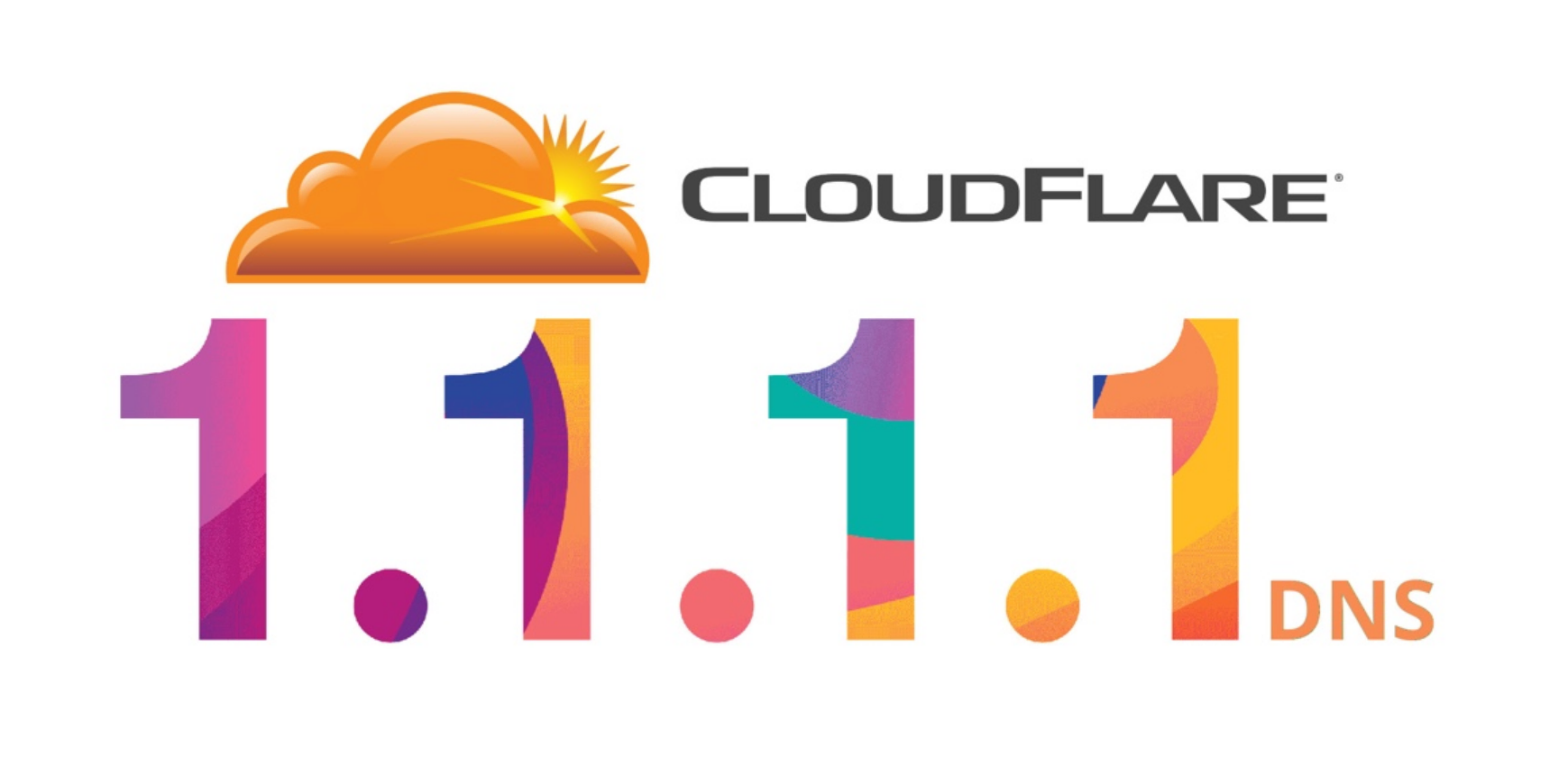
In reality, the economic value of these memorable IP addresses is immeasurable. Referring to domain name transactions, many can sell for tens of millions or even hundreds of millions of dollars. In such cases, there’s no need for IP addresses used by every household—which generate no economic value—to be so memorable.
Moreover, due to historical inertia, 192.168 has been used for over 30 years, and both users and manufacturers are accustomed to it. Changing to something else, even if simpler, would require users to relearn and manufacturers to update documentation, with high costs and low benefits. For example, Apple’s early Airport routers used 10.0.1.1, but market feedback was poor, and they later switched to 192.168.x.x. Thus, while 192.168 isn’t perfect, it’s the most stable choice.
Modern Router “Solutions”
Although 192.168.1.1 is hard to remember, there’s no need to focus on it now. For instance, most newly purchased routers indicate in their manuals that you can use URLs like miwifi.com or router.asus.com to access the settings page—just enter the URL. Alternatively, many routers come with dedicated apps that allow you to change settings with a few clicks, without needing to know the IP address.
If you want to change to another address, it’s quite troublesome. While router settings generally allow you to change the gateway address, it’s easy to forget after making the change. Lawtee often forgets and has to check the network status of a device before accessing, especially when there are multiple modems or routers at home.
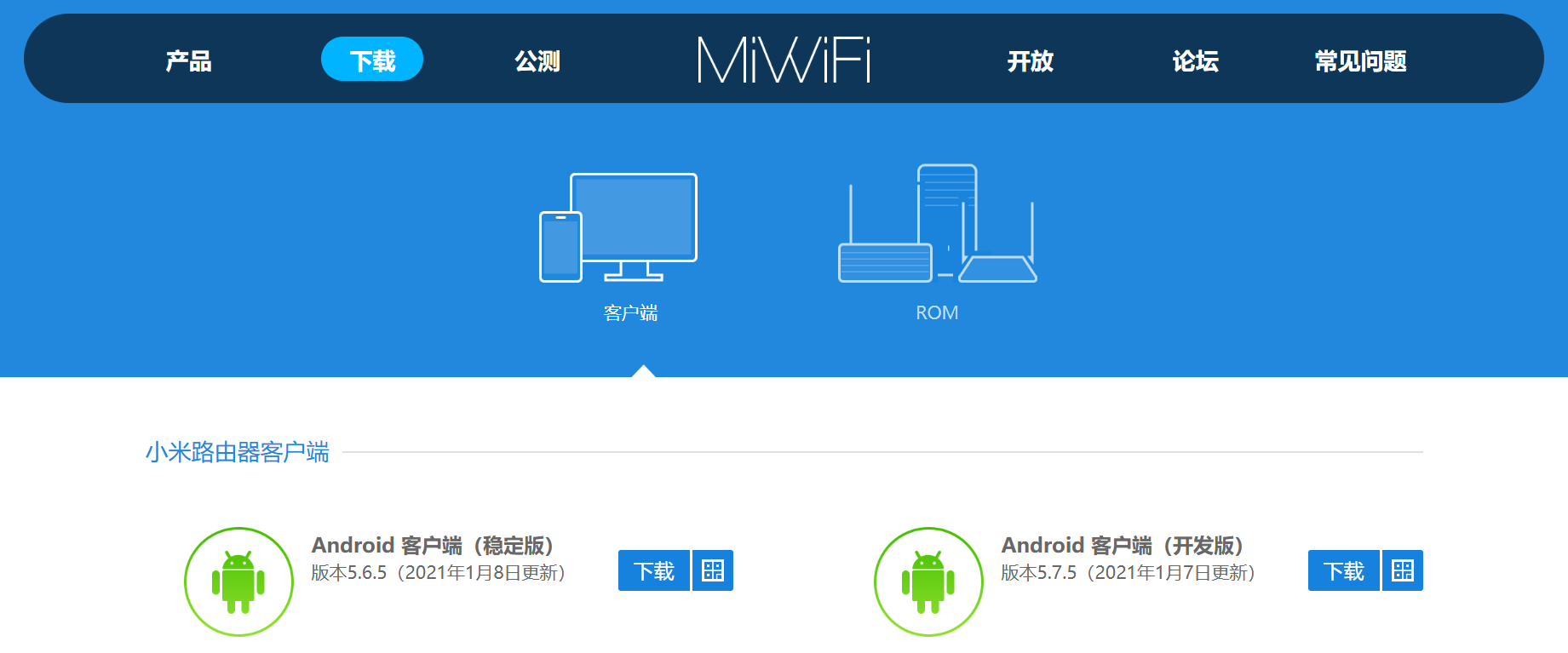
Conclusion
After all this effort, Lawtee believes that 192.168.1.1 wasn’t chosen to make things difficult for users. Considering the conditions in the 1990s when this address was decided, it’s likely that no one anticipated routers would become household items. Back in the dial-up ADSL era, having one computer per household connected to the internet was already impressive—who could have predicted that every home would have numerous devices needing internet access? Fortunately, 192.168 isn’t too hard to remember; with a few tries, anyone can get it.